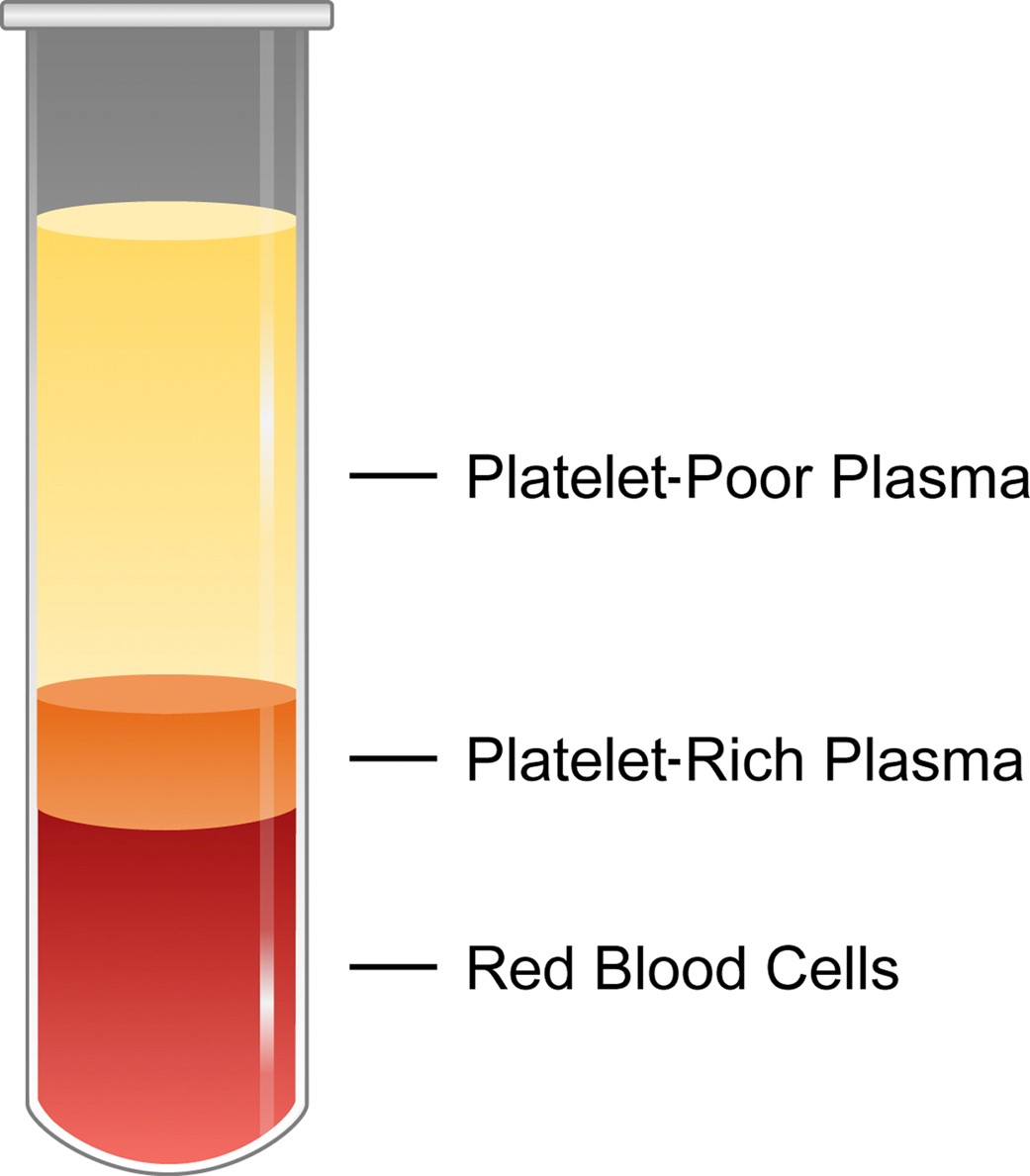Platelet-rich Plasma in Central Centrifugal Cicatricial Alopecia (CCCA)
Commentary by Tejashri Venkatesh | MD Candidate 2025 | Chicago Medical School at Rosalind Franklin University
Platelet-rich plasma (PRP) is a preparation of concentrated platelets found in plasma obtained by centrifugation of blood (Figure I)1. It contains growth factors and proteins implicated in tissue repair and regeneration2,3. A patient’s own blood is drawn, platelets are concentrated and injected into the patient at indicated locations. PRP was first used as an antihemorrhagic agent in the 1980s4; its use has since evolved into applications such as wound healing, joint restoration, bone maturation and formation, and cosmetics. In recent years, it has emerged as a novel therapeutic for hair loss disorders.

Figure I1: Obtaining PRP from centrifugation of whole blood.
PRP has proven to be a safe and effective therapy for nonscarring androgenetic alopecia (AGA)5,6,7. Given its anti-inflammatory properties as well as its ability to remodel scar tissue3, it has been proposed as a potentially effective therapeutic for scarring alopecia by experts8, particularly for central centrifugal cicatricial alopecia (CCCA) with concomitant AGA9. Encouraging evidence comes from a few published case reports of patients with stabilized disease, who demonstrated significantly improved follicular density after 3 consecutive monthly treatments of PRP injections10,11. No adverse effects were reported with multiple sessions. However, a reduction in follicular density was noted 6 months after treatment, suggesting that frequent maintenance therapy may be required to upkeep the benefit achieved with initial treatment.
While the promise of PRP gives hope to both patients with recalcitrant scarring alopecia and dermatologists, a plethora of questions and limitations remain to be addressed. Larger studies and clinical trials are needed to generate more robust data on efficacy of PRP in scarring alopecia. Standardization of treatment preparation, dose, frequency, and evaluation is necessary. Significant cost is a barrier for many patients.
References:
- Gupta, A. K., Renaud, H. J., & Rapaport, J. A. (2021). Platelet-rich Plasma and Cell Therapy: The New Horizon in Hair Loss Treatment.Dermatologic clinics, 39(3), 429–445. https://doi.org/10.1016/j.det.2021.04.001
- Sclafani, A. P., & Azzi, J. (2015). Platelet Preparations for Use in Facial Rejuvenation and Wound Healing: A Critical Review of Current Literature.Aesthetic plastic surgery, 39(4), 495–505. https://doi.org/10.1007/s00266-015-0504-x
- El-Sharkawy, H., Kantarci, A., Deady, J., Hasturk, H., Liu, H., Alshahat, M., & Van Dyke, T. E. (2007). Platelet-rich plasma: growth factors and pro- and anti-inflammatory properties.Journal of periodontology, 78(4), 661–669. https://doi.org/10.1902/jop.2007.060302
- Ferrari, M., Zia, S., Valbonesi, M., Henriquet, F., Venere, G., Spagnolo, S., Grasso, M. A., & Panzani, I. (1987). A new technique for hemodilution, preparation of autologous platelet-rich plasma and intraoperative blood salvage in cardiac surgery.The International journal of artificial organs, 10(1), 47–50.
- Alves, R., & Grimalt, R. (2016). Randomized Placebo-Controlled, Double-Blind, Half-Head Study to Assess the Efficacy of Platelet-Rich Plasma on the Treatment of Androgenetic Alopecia.Dermatologic surgery : official publication for American Society for Dermatologic Surgery [et al.], 42(4), 491–497. https://doi.org/10.1097/DSS.0000000000000665
- Mao, G., Zhang, G., & Fan, W. (2019). Platelet-Rich Plasma for Treating Androgenic Alopecia: A Systematic Review.Aesthetic plastic surgery, 43(5), 1326–1336. https://doi.org/10.1007/s00266-019-01391-9
- Picard, F., Hersant, B., Niddam, J., & Meningaud, J. P. (2017). Injections of platelet-rich plasma for androgenic alopecia: A systematic review.Journal of stomatology, oral and maxillofacial surgery, 118(5), 291–297. https://doi.org/10.1016/j.jormas.2017.06.011
- Alves, R., & Grimalt, R. (2020). Platelet-Rich Plasma and its Use for Cicatricial and Non-Cicatricial Alopecias: A Narrative Review.Dermatology and therapy, 10(4), 623–633. https://doi.org/10.1007/s13555-020-00408-5
- Okereke, U. R., Simmons, A., & Callender, V. D. (2019). Current and emerging treatment strategies for hair loss in women of color.International journal of women’s dermatology, 5(1), 37–45. https://doi.org/10.1016/j.ijwd.2018.10.021
- Dina, Y., & Aguh, C. (2019). Use of Platelet-Rich Plasma in Cicatricial Alopecia.Dermatologic surgery : official publication for American Society for Dermatologic Surgery [et al.], 45(7), 979–981. https://doi.org/10.1097/DSS.0000000000001635
- Larrondo, J., Petela, J., & McMichael, A. J. (2022). Transitory hair growth using platelet-rich plasma therapy in stabilized central centrifugal cicatricial alopecia.Dermatologic therapy, 35(11), e15798. https://doi.org/10.1111/dth.15798
